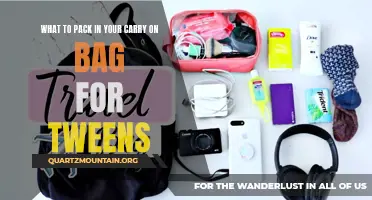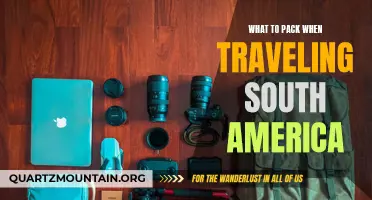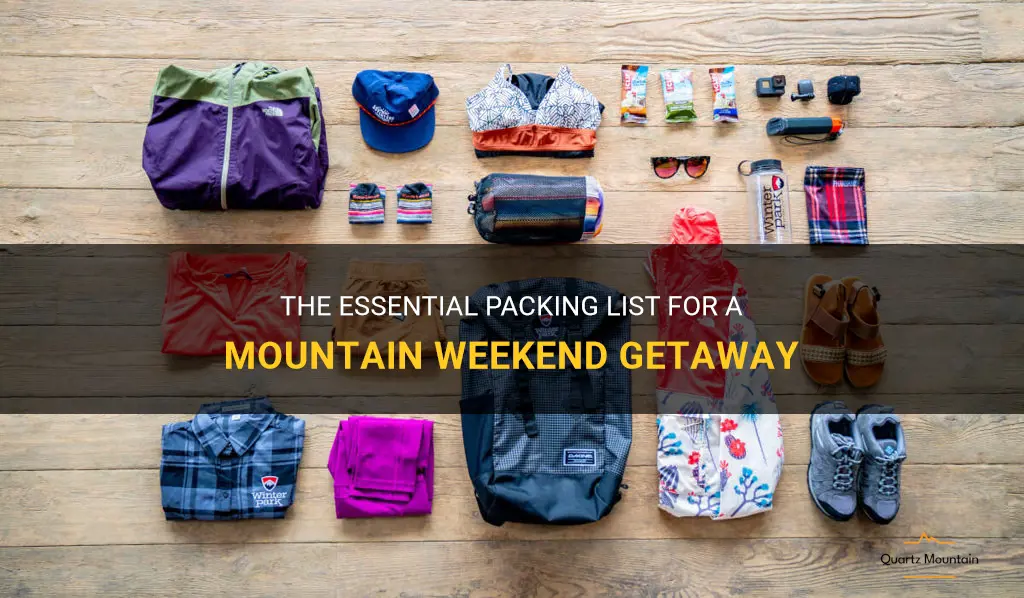
Are you planning a mountain weekend getaway and feeling overwhelmed with what to pack? We've got you covered with the essential packing list to ensure you have a stress-free and enjoyable trip. From warm layers to sturdy hiking boots, this guide will help you pack the necessities for a fun-filled adventure amidst the stunning mountain scenery. So, grab your backpack and get ready to conquer nature with confidence!
| Characteristics | Values |
|---|---|
| Clothing | |
| Equipment | |
| Food | |
| Personal items | |
What You'll Learn
- What essential clothing items should I pack for a mountain weekend?
- What type of footwear is recommended for a mountain weekend?
- Are there any specific outdoor gear and accessories that I should bring?
- How should I prepare for potential changes in weather on a mountain weekend?
- Are there any specific items that are recommended for various activities, such as hiking or camping, during a mountain weekend?

What essential clothing items should I pack for a mountain weekend?
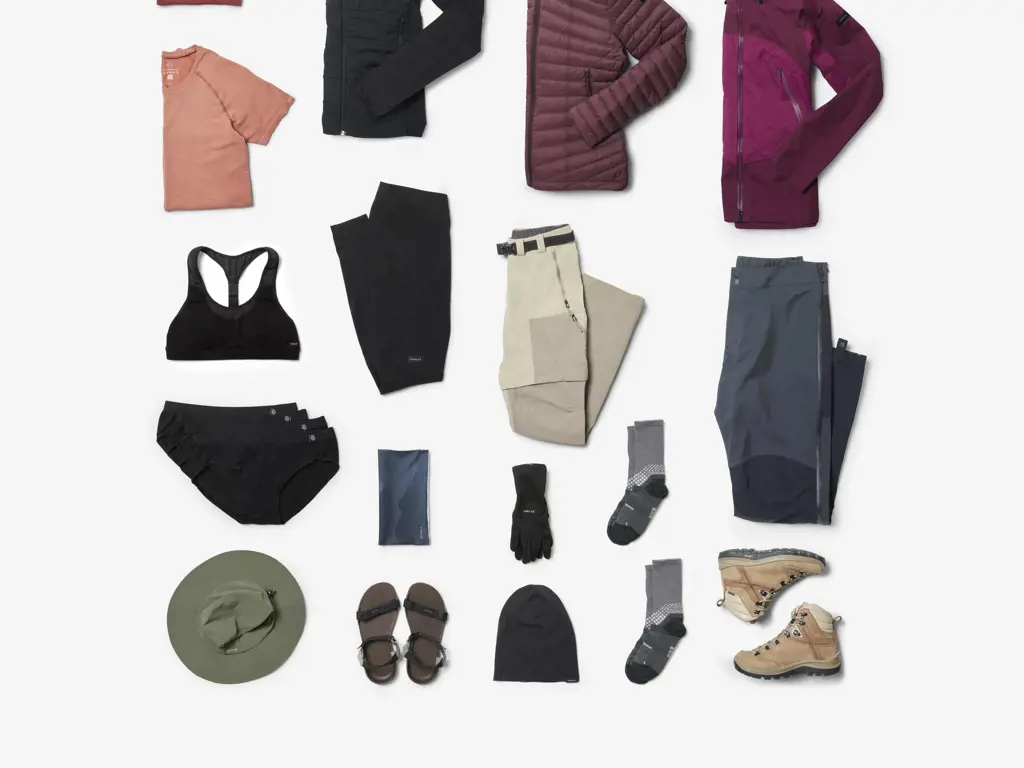
When planning a mountain weekend getaway, it is important to pack the right clothing items to ensure your comfort, protection, and enjoyment during your outdoor adventures. The mountain environment can present unique challenges such as unpredictable weather, temperature fluctuations, and rugged terrain. By packing the following essential clothing items, you will be well-prepared for all the activities and conditions you may encounter.
Layered clothing:
The key to staying comfortable in the mountains is to dress in layers. Layered clothing allows you to add or remove layers as the temperature changes throughout the day. Start with a moisture-wicking base layer, such as a thermal or synthetic t-shirt, to keep your skin dry and regulate body temperature. On top of that, wear a mid-layer, such as a fleece or softshell jacket, to provide insulation. Finally, top it off with a waterproof and windproof outer layer, like a shell jacket, to protect against rain, snow, and wind.
Moisture-wicking underwear and socks:
Invest in moisture-wicking underwear and socks made from materials like merino wool or synthetic fibers. These materials wick away sweat and moisture, keeping you dry and reducing the risk of blisters and discomfort during long hikes or strenuous activities. Avoid cotton, as it retains moisture and takes longer to dry.
Hiking pants or convertible pants:
Opt for hiking pants or convertible pants that are durable, quick-drying, and offer flexibility for various activities. Convertible pants can be zipped off into shorts, providing versatility to adapt to changing weather and temperature.
Insulated jacket or down vest:
Even during the warmer months, temperatures in the mountains can drop significantly, especially in the evenings. Packing an insulated jacket or a down vest provides an extra layer of warmth when needed. These items are lightweight, compact, and can be easily stowed away in your backpack.
Hat, gloves, and neck gaiter:
Protect your extremities from the cold by bringing a warm hat, gloves, and a neck gaiter or scarf. These items help retain body heat and protect sensitive areas like your head, hands, and neck from wind and low temperatures.
Sturdy hiking boots:
Investing in a pair of sturdy hiking boots is vital for navigating the mountain terrain. Look for boots with ankle support, a durable outsole for traction, and sufficient waterproofing. Break in your boots before your trip to avoid blisters and discomfort.
Sunglasses and sunscreen:
The mountain environment exposes you to increased UV radiation due to higher altitudes and the reflection of sunlight on snow. Protect your eyes with sunglasses that provide 100% UV protection. Additionally, apply a broad-spectrum sunscreen with a high SPF rating to shield your skin from damaging sun rays.
Remember, always check the weather forecast before packing and adjust your clothing choices accordingly. Be prepared for unexpected changes in weather conditions and pack extra layers for colder temperatures. It is better to have additional clothing options than to be underdressed and uncomfortable. Your clothing choices can greatly impact your overall experience in the mountains, so choose wisely and prioritize comfort, protection, and adaptability.
Packing Guide for a Baltic Cruise in September: Essential Items to Bring
You may want to see also

What type of footwear is recommended for a mountain weekend?
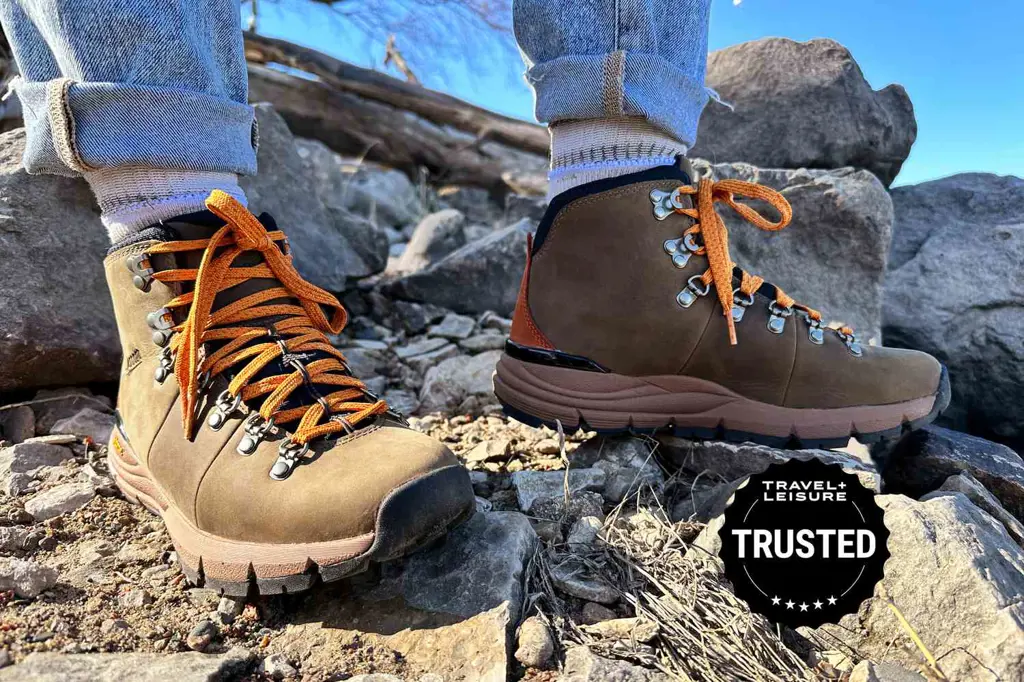
When planning a mountain weekend, it is important to consider the appropriate footwear. Mountains can be treacherous and proper footwear is essential for a safe and enjoyable trip. Here are some recommendations on what type of footwear you should consider when heading to the mountains.
- Hiking Boots: Hiking boots are a great option for mountain weekends. They provide excellent ankle support and stability, which is important when navigating uneven terrain. Look for boots with a sturdy sole that provides good traction, as this will help prevent slipping on rocks and loose gravel. Additionally, make sure the boots are waterproof or have good water resistance, as mountain trails can be wet and muddy.
- Trail Running Shoes: If you prefer a lighter option or plan to do more running on your mountain weekend, trail running shoes are a good choice. These shoes are designed with a lower ankle collar, allowing for more freedom of movement. They also have a grippy sole for better traction on uneven surfaces. However, it's important to note that trail running shoes may not provide as much ankle support as hiking boots, so if you have weak ankles or are carrying a heavy backpack, hiking boots may be a better option.
- Gaiters: Gaiters are a useful accessory to consider when venturing into the mountains. They are worn over your shoes and pants to keep out debris, mud, and water. Gaiters can prevent small rocks, twigs, or even snow from getting inside your shoes, which can be uncomfortable and even cause blisters. They are particularly handy when hiking in snowy or muddy conditions, as they provide an extra layer of protection against the elements.
- Socks: Don't underestimate the importance of good quality socks when it comes to mountain footwear. Look for socks made from moisture-wicking materials such as merino wool or synthetic blends. These types of socks will help keep your feet dry and prevent blisters. Avoid cotton socks, as they retain moisture and can lead to uncomfortable rubbing and chafing.
- Break-in Your Footwear: It is crucial to break in your footwear before embarking on your mountain weekend. Wear your boots or shoes around the house or on shorter hikes to give your feet time to adjust and the footwear to mold to your feet. Breaking in your footwear will help prevent blisters and ensure a comfortable fit on the trail.
Examples of appropriate mountain footwear:
- Hiking boots with a sturdy sole, ankle support, and water resistance.
- Trail running shoes with a grippy sole and lower ankle collar.
- Gaiters to protect against debris, mud, and water.
- Moisture-wicking socks made from merino wool or synthetic materials.
In conclusion, when planning a mountain weekend, it is crucial to choose the appropriate footwear. Hiking boots, trail running shoes, and gaiters are all viable options depending on your preferences and the nature of your trip. Additionally, be sure to wear moisture-wicking socks and break in your footwear beforehand to ensure a comfortable and safe experience in the mountains.
Essential Items to Pack for a Trip to St. George's
You may want to see also

Are there any specific outdoor gear and accessories that I should bring?
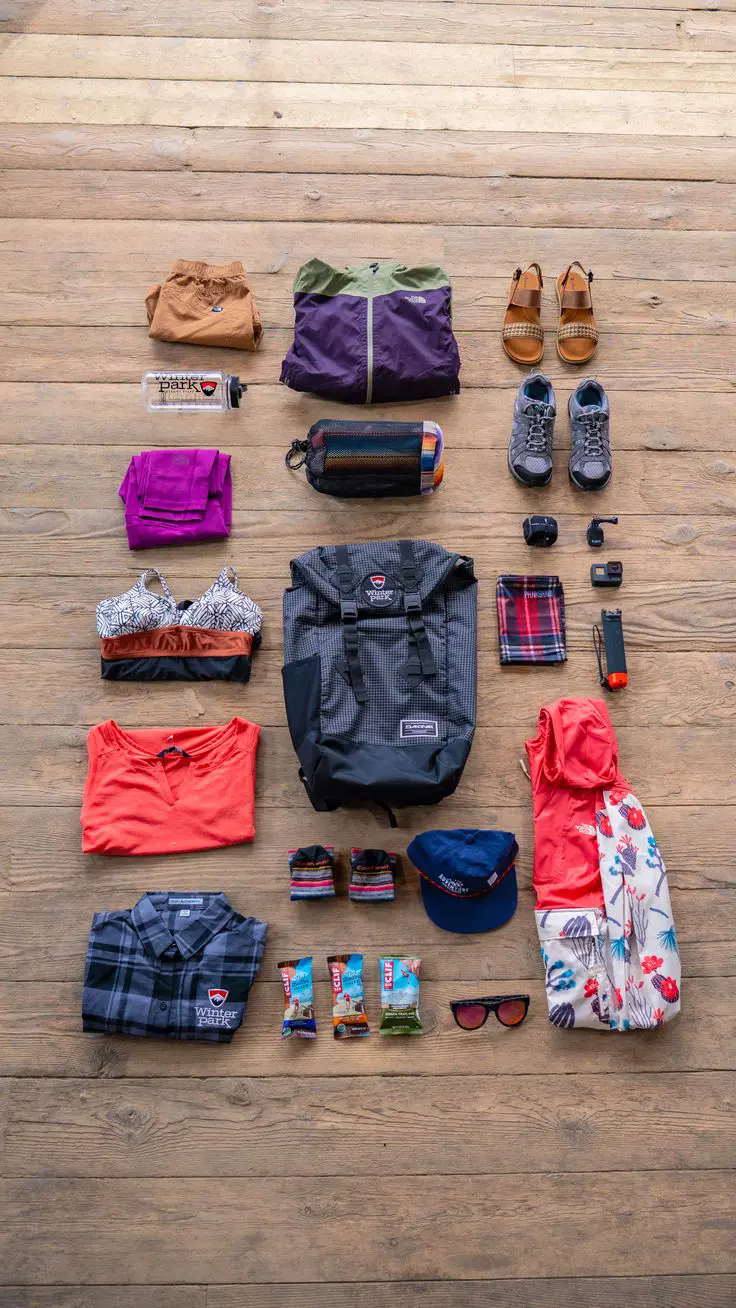
When it comes to outdoor activities, having the right gear and accessories can make all the difference in your experience. Whether you are going hiking, camping, or participating in any other outdoor adventure, here are some specific items that you should consider bringing.
- Hiking Boots: A good pair of hiking boots is essential for any outdoor activity. They provide support and protection for your feet, especially on uneven terrain. Look for boots with a sturdy sole and ankle support to prevent injuries.
- Waterproof Jacket: Weather conditions can change quickly when you are outdoors, so it is important to have a waterproof jacket with you. This will keep you dry and comfortable, even in unexpected rain showers.
- Durable Backpack: A backpack is essential for carrying all your gear, snacks, and water during your outdoor adventure. Look for a backpack that is durable, has multiple compartments for organization, and is comfortable to carry.
- Water Bottle: Staying hydrated is crucial when you are spending time outdoors. Invest in a good quality, reusable water bottle that is easy to carry and can hold enough water for your entire trip.
- Headlamp: If you plan on camping or hiking during the night, a headlamp is a must-have. It will provide you with hands-free lighting and make your outdoor activities much safer and easier.
- Trekking Poles: If you are planning on hiking over challenging terrain, trekking poles can be a valuable accessory. They provide stability and support, reducing the strain on your knees and improving your balance.
- Portable Stove: If you are planning on cooking your own meals during your outdoor adventure, a portable stove is a must. Look for a lightweight and compact stove that is easy to carry and has adjustable heat settings.
- Insect Repellent: Mosquitoes and other insects can be a nuisance when you are spending time outdoors. Make sure to bring insect repellent to protect yourself from bites and potential diseases.
- First Aid Kit: Accidents can happen, even when you are outdoors. It is essential to have a first aid kit with you that includes items like bandages, antiseptic wipes, painkillers, and any necessary medication you may need.
- Navigation Tools: If you are going on a wilderness adventure, having navigation tools like a map and compass is crucial. Make sure you know how to use them effectively to avoid getting lost.
These are just a few examples of the essential outdoor gear and accessories that you should bring. The specific items may vary depending on the activity and location, so it is important to do your research beforehand and plan accordingly. By bringing the right gear, you can ensure a safe and enjoyable outdoor experience.
The Ultimate Guide to Packing for Kauai: Your Essential Checklist
You may want to see also

How should I prepare for potential changes in weather on a mountain weekend?
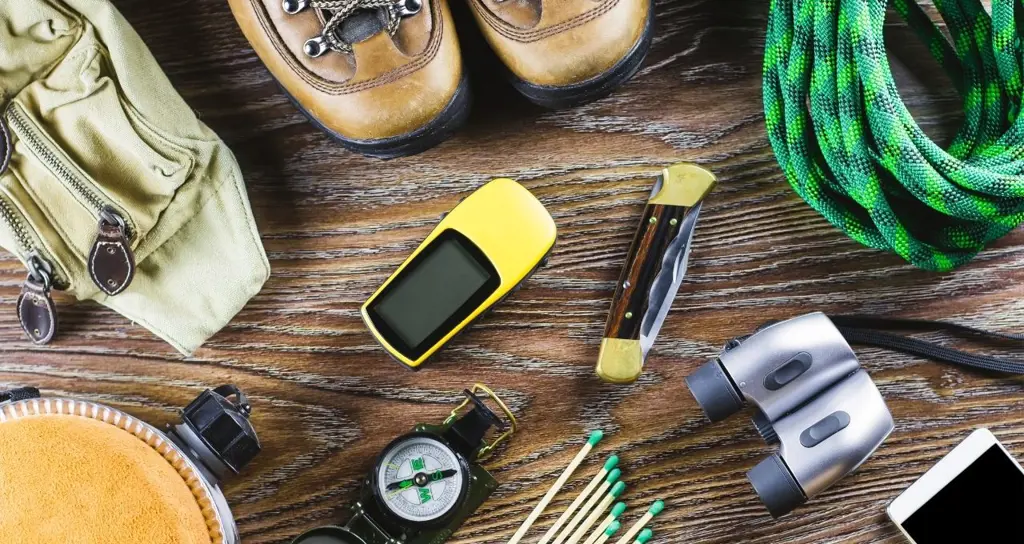
Planning a weekend getaway in the mountains can be an exciting adventure, but it is important to be well-prepared for potential changes in weather. The weather in mountainous regions can be unpredictable, with rapid shifts in temperature, wind, and precipitation. To ensure a safe and enjoyable trip, follow these steps to prepare for potential changes in weather on your mountain weekend.
- Check the weather forecast: Before you head out, check the weather forecast for the area where you'll be staying. Look for any potential storms, high winds, or drastic temperature changes. Keep in mind that weather forecasts can change, so it is a good idea to continue monitoring the forecast leading up to your trip.
- Dress in layers: Layering is key when it comes to preparing for mountain weather. Start with a moisture-wicking base layer to keep you dry and comfortable. Add a warm mid-layer for insulation, and top it off with a waterproof and windproof outer layer. This way, you can easily add or remove layers depending on the temperature and weather conditions.
- Pack appropriate gear: In addition to layers of clothing, make sure to pack appropriate gear for the conditions you may encounter. This includes a sturdy pair of hiking boots, waterproof pants and jacket, warm hat and gloves, and sunglasses. If you'll be camping, don't forget a four-season tent, a warm sleeping bag, and a camp stove for cooking hot meals.
- Bring extra food and water: Weather changes can sometimes lead to unexpected delays or longer hikes than planned. It is always a good idea to pack extra food and water in case of emergencies. Carry high-energy snacks that are easy to eat on the go, such as trail mix or energy bars. Also, make sure to bring a water filter or purification tablets in case you run out of clean water.
- Stay informed: Once you're on your trip, it is important to stay informed about any weather changes that may occur. Carry a portable weather radio or download a weather app on your phone that can provide real-time updates. Pay attention to any warnings or advisories and make smart decisions based on the information you receive.
- Be flexible with your plans: If the weather takes a turn for the worse, it is important to be flexible with your plans. Modify your itinerary or seek shelter until the conditions improve. Remember that your safety should always be the top priority.
- Seek shelter if needed: In the event of a severe weather warning, seek shelter immediately. Find a sturdy structure or a low-lying area away from trees and seek protection from lightning, high winds, or heavy rain. It is better to wait out the storm in a safe location than to risk injury in dangerous conditions.
In conclusion, preparing for potential changes in weather on a mountain weekend involves checking the forecast, dressing in layers, packing appropriate gear, carrying extra food and water, staying informed, being flexible with your plans, and seeking shelter when necessary. By following these steps, you can help ensure a safe and enjoyable mountain adventure. Remember, the weather may be unpredictable, but your preparedness doesn't have to be.
The Ultimate Guide to Packing Books Safely for Moving or Storage
You may want to see also

Are there any specific items that are recommended for various activities, such as hiking or camping, during a mountain weekend?
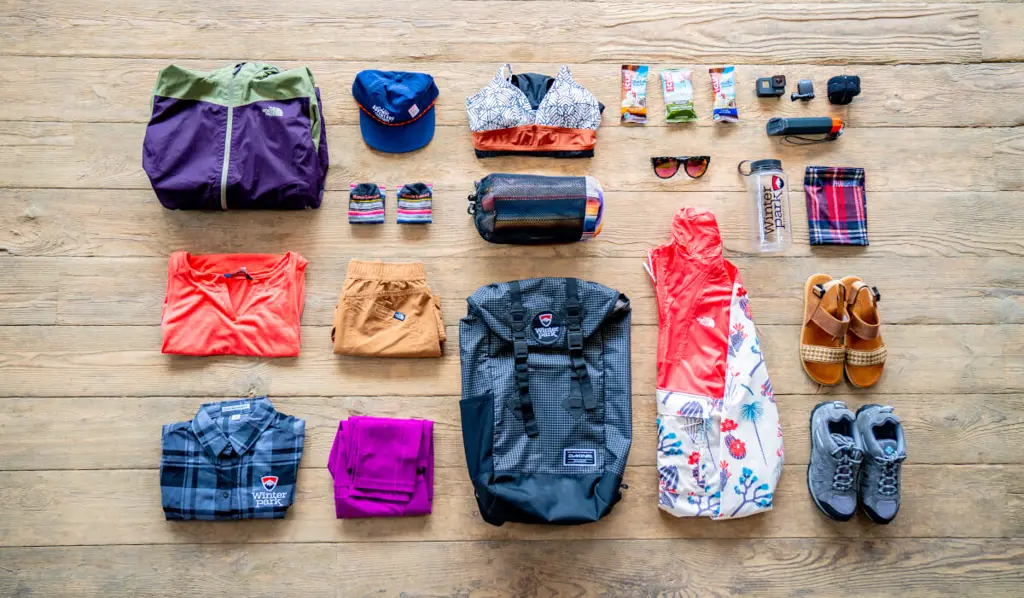
When planning a mountain weekend, it's essential to have the right gear and equipment for various activities such as hiking or camping. Having the appropriate items can enhance your experience and ensure your safety in the mountain environment. Below are some recommendations for specific items to consider when embarking on a mountain weekend.
For Hiking:
- Proper Footwear: Invest in a pair of sturdy hiking boots that provide ankle support and have a good grip on various terrains. This will help prevent ankle injuries and ensure a comfortable hiking experience.
- Backpack: Choose a backpack that fits well and has enough storage capacity for essential items like food, water, clothing layers, and hiking gear. Look for backpacks with adjustable straps and good ventilation to increase comfort during long hikes.
- Navigation Tools: Carry a compass, map, and a GPS device or smartphone app with pre-downloaded offline maps to help navigate your route effectively. These tools will prevent you from getting lost in unfamiliar terrain.
- Water and Snacks: Stay hydrated by carrying an adequate amount of water. It's also wise to bring energy-boosting snacks like trail mix or granola bars to keep your energy levels up during the hike.
- Emergency Kit: Pack a basic first-aid kit with essentials like band-aids, antiseptic wipes, and pain relievers. Additionally, include items like a whistle, emergency blanket, and a multipurpose tool for unforeseen situations.
For Camping:
- Tent: Choose a tent that is appropriate for the number of people in your group. Consider the weather conditions and select a tent that offers good ventilation, waterproofing, and durability.
- Sleeping Bag and Pad: Invest in a quality sleeping bag that suits the expected temperatures. Additionally, a sleeping pad can provide insulation and cushioning for a comfortable night's sleep.
- Cooking Equipment: Bring a portable stove, fuel, and cookware to prepare meals. Lightweight and compact options are favorable for backpacking trips, while car campers have more flexibility in choosing camping stoves.
- Lighting: A headlamp or flashlight is essential for navigating your campsite in low-light conditions. Don't forget to pack extra batteries.
- Camp Furniture: Consider bringing camping chairs, tables, or inflatable loungers to enhance your comfort at the campsite. These items can provide a space for relaxation and socializing.
Remember to check the weather forecast before your trip and pack appropriate clothing layers for different conditions. Dressing in moisture-wicking and breathable fabrics can help regulate body temperature and keep you comfortable. Don't forget essentials like sunscreen, insect repellent, and a hat to protect yourself from the sun and bugs.
Lastly, it's crucial to research and familiarize yourself with the local regulations and recommendations for the specific mountain area you plan to visit. Some areas may have restrictions on campfires or require bear-resistant food storage. By being prepared and having the right gear, you can make the most of your mountain weekend while staying safe and comfortable.
Essential Items for a Military Deployment: A Comprehensive Packing Guide
You may want to see also
Frequently asked questions
When packing for a mountain weekend, it is important to bring layers of clothing as the weather can change quickly. Be sure to pack warm sweaters or fleeces, a waterproof jacket, and a few pairs of comfortable walking shoes or hiking boots. Additionally, don't forget to pack sunscreen, a hat, sunglasses, and insect repellent to protect yourself from the sun and bugs. Other essentials to bring include a backpack for day hikes, a refillable water bottle, a camera, and any necessary medication or toiletries.
If you plan on participating in outdoor activities such as hiking or camping, there are a few additional items you should pack. A sturdy backpack is essential for carrying your supplies, as well as a map and compass or GPS device for navigation. Depending on the length and intensity of your hikes, you may also want to bring a first aid kit, a headlamp or flashlight, a whistle, and a multi-tool or Swiss army knife. It is also important to pack enough food and water for your outdoor adventures.
While the weather in the mountains during the summer can be warm, it is still important to pack for various conditions. Bring lightweight and breathable clothing for the daytime, such as shorts, t-shirts, and tank tops. However, also pack a few layers for cooler evenings or higher elevations, such as a light sweater or jacket. Don't forget to bring a swimsuit if there are lakes or swimming areas nearby. Lastly, be sure to pack comfortable walking shoes or hiking sandals for outdoor activities.
When visiting the mountains during the winter, it is important to pack for cold and snowy conditions. Be sure to bring warm winter clothing, such as thermals, sweaters, heavy coats, hats, gloves, scarves, and thick socks. Waterproof and insulated boots are essential for navigating through snow and ice. Additionally, pack snow gear such as snow pants, a snow jacket, and waterproof mittens or gloves. Don't forget to bring traction devices for your shoes or boots, such as crampons or ice cleats, to help prevent slipping on icy surfaces.





